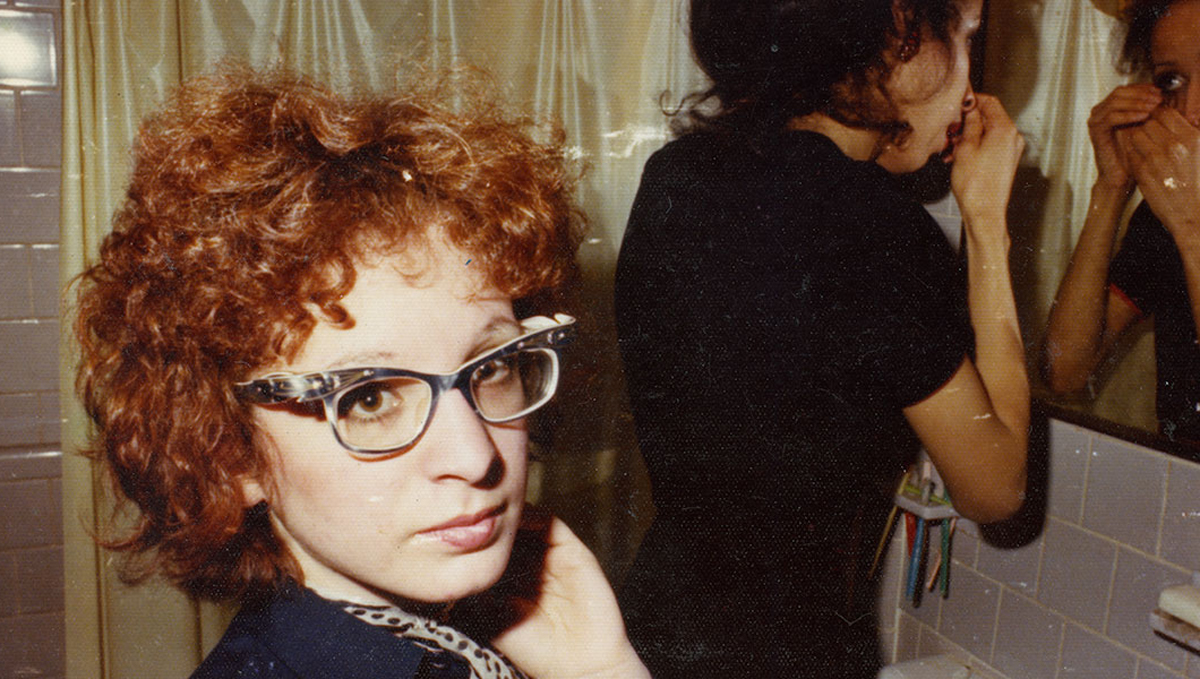In “All the Beauty and the Bloodshed,” Nan Goldin can be heard recounting her time as a bartender in New York’s Tin Pan Alley during the early 1980s, putting her squarely at the intersection of a steady stream of all walks of life in the city from artists to journalists to prostitutes to IRS agents. (“They were as hard to handle as the bikers,” a co-worker laughs.) It was fertile territory for her to take pictures, a pursuit she developed at first as a means to “walk through fear,” feeling the camera was a form of protection. But as she explains it wasn’t her eye but her ear that was really put to use at the watering hole, listening to others who weren’t used to anyone really taking the time to hear them out, a compassion that would eventually find its way into her photos when the portraits she ended up snapping would lack the judgment they might’ve felt from how they felt seen in their own experience.
This is not something that Goldin can entirely explain herself in Laura Poitras’ magnificent biography, in which one great artist has the insight into another that there are things that even the most skilled observers can’t see about themselves, and in taking stock of her life, the director shrewdly recognizes how Goldin gradually, and somewhat unconsciously, gained the tools to become a force to be reckoned with, not only as a photographer but as an activist who immediately understood the fight required against the opioid epidemic after having become addicted to painkillers herself. With her experience at Tin Pan Alley where she saw artists forced to channel their passion into survival once AIDS ravaged the gay community with no assistance coming from the Reagan Administration, Goldin can be seen in the present masterminding public protests with her advocacy organization P.A.I.N. at the same museums where her works are given prominent placement, often afforded by the largesse of the Sackler family that sought to whitewash their dealings at Purdue Pharma with philanthropy.
Although Goldin’s work has always felt dangerous in chronicling the New York underground and her own fearless exploits, it has never come across more so as when she’s coming up with inventive demonstrations and starts to withhold her pictures from museums that have taken contributions from the Sacklers. However, “All the Beauty and the Bloodshed” reveals an instinct to play the long game, with one of her signature works “The Ballad of Sexual Dependency” continuing to be refined as a slideshow over the course of 40 years, that comes in handy when countering the Sacklers, whose patriarch Arthur, who had the greatest interest in collecting priceless works, maximized profits to pay for them by marketing valium directly to doctors and then repeating the same playbook to make a fortune on Oxycontin.
Poitras, working with a gifted team of editors in Amy Foote, Brian A. Kates and Joe Bini, is able to show how Goldin has constantly found ways to turn personal struggle into strength without ever putting too fine a point on it and the film formally embodies this quality by incorporating excerpts from the slideshows that Goldin has spent her career putting together, reflecting on the physical abuse she experienced at the hands of a violent boyfriend and the painfully short life of her sister Barbara, whose sexuality her parents didn’t approve of. One can’t help but think the film is elevated by the director’s own experience of maintaining objectivity after investing time and energy into following subjects she cares deeply about in such films as “The Oath” and “Citizenfour” as Goldin contemplates what her art amounts to as a political act. By leaving in the uncertainty she expresses well after the efficacy of her efforts has been established, the film impressively gets at a truth about her and about history when it is those who are restless and unrelenting who are bound to leave the greatest mark and more often than not, the most prepared have the least expectations.
“All the Beauty and the Bloodshed” will screen at the New York Film Festival on October 7th at Alice Tully Hall at 6 pm and 9:15 pm. It will be distributed in the U.S. by Neon beginning November 23rd.




